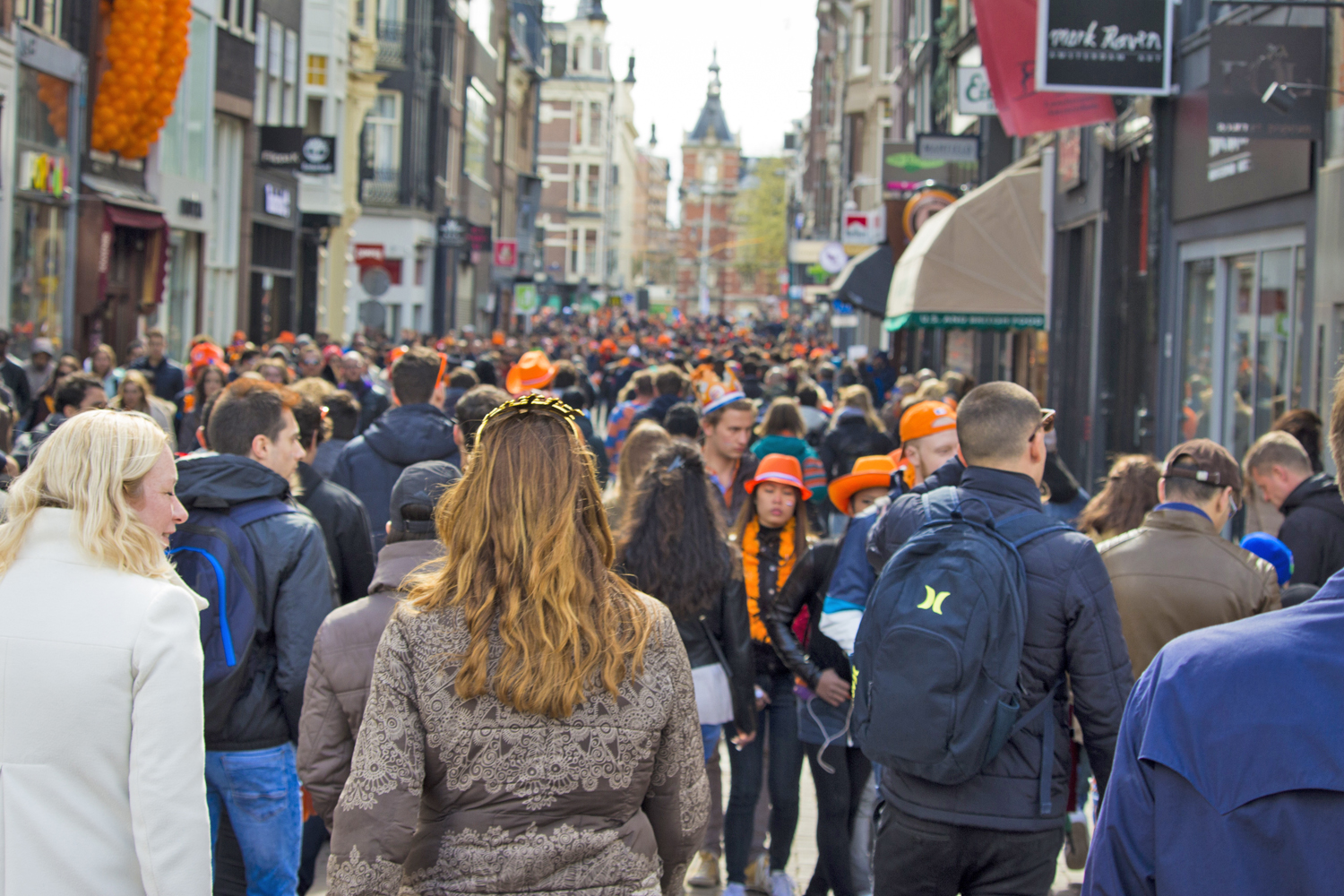People express themselves freely in social media. Can their posts be used for crowd control at large events? For sure, says Dr Vincent Gong, that’s what we made it for.
What are people planning on King's Day? They'll tell you on Twitter en Insta. (Photo: pxhere)
Before the Covid-19 crisis, events like King’s Day, football matches and Sail attracted tens of thousands of people. Crowd managers may use counting systems, Wi-Fi and Bluetooth sensors, GPS trackers to monitor the crowd. This helps them anticipate situations like overcrowding or rioting. However accurate the measurements, they don’t measure the mood on the street. That’s where Dr Vincent Gong comes in. He graduated from Computer Science (Faculty of EEMCS) on ‘deriving human activity from social media data’ and from Transportation and Planning (Faculty of CEG). He combined the two disciplines in his PhD research. Social media data can complement the information in mobility dashboards, he says.
What extra information does your method provide?
“On King’s Day, we’d like to know the sentiment of the crowd in certain areas. We can estimate the sentiment based on the keywords people use in their posts. Keywords can be positive, neutral or negative. Celebration, celebrate or happy – are all positive keywords. Also, the event’s name can be used.”
How do you filter these posts?
“We use Instagram and Twitter. Both platforms provide an Application Programming Interface (API). It’s an interface that gives you an entrance through which you can collect data from the platform. So you can tell the system you want the King’s Day posts in the Amsterdam area from 05:00 to 24:00. The system will then send you all the relevant posts.”
What does that tell you?
“This knowledge can be used to find out what people are talking about during the event. You can see the most popular topic at the event, and the most popular place. They may mention central station, the canal parade or fireworks.”
How does that help crowd control?
“Crowd managers need to manage the crowd, right? Before they take decisions they need to know the status of the crowd. They have to know how big a crowd is, where it is, what the age distribution is, the gender and so on. It makes a difference if a group consists of young males or of the elderly. There are several ways to gather this type of information. They can use cameras, phone sensors, and counting systems. These are quite expensive and they don’t tell you what people are talking about. Social media, on the other hand, is free. Are they happy or agitated? You can’t get this type of information from the counters, right? So, this is the advantage of social media.”
Do you expect your technology to be used in practice?
“Yes! For sure. That’s why we developed the technique. We published the research in publicly available journals so that software developers can turn the research into applications.”
Making events safer is a commendable goal. But can’t your research be abused by regimes in Minsk or Hong Kong to control the crowds oppressively?
“I think about this intensively. I’m crave democracy. I read news from Hong Kong and from Minsk. In Hong Kong crowds are monitored – we don’t do that, we derive information. The most important distinction is privacy. We comply with the Guidelines Data Protection Regulation (GDPR) which means that collected data may not be used to identify people. If we collect data, it includes the user ID. But before storing it in our research database we hash it. That means we translate the ID into a randomly computer-recognised one-way code which cannot be traced back to identify the sender. The second thing is that we only focus on the aggregated data in our research. We want to know how many people there are, what the density of the crowd in the space is, what the mood is. We don’t want to know who is there.”
- Vincent X. Gong (1983) obtained his PhD from the Faculty of Civil Engineering and Geosciences on 21 September 2020. His PhD supervisors were Professor Serge Hoogendoorn (Faculty of CITG), Dr Winnie Daamen (Faculty of CITG) and Professor Alessandro Bozzon (Faculties of IDE and EEMCS). The dissertation is called Using Social Media to Characterise Crowds in City Events for Crowd Management.
Do you have a question or comment about this article?
j.w.wassink@tudelft.nl


Comments are closed.